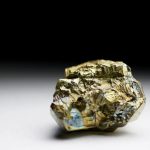Precious Metal Spot Prices
All investors should understand how the value of their holdings is determined. Most marketplace trading depends upon what’s known as the spot price, especially when it comes to liquid assets like precious metals.
The spot price is the present marketplace trade value of an asset, such as a commodity or security. Even though spot prices are defined by time and place, when it comes to exchange rates, they are typically uniform around the globe.
Bullion traders should read on to learn more about precious metal spot prices and ensure they get the best return on investments.
Key Precious Metal Markets
There are two key markets that help to determine the spot prices of precious metals. Let’s go over these markets and how they impact a “fair” price when it comes to a return on gold and silver.
The Over-the-Counter (OTC) Market
The OTC market is made up of a network of independent traders working privately in pairs 24 hours a day. Each deal is made over the phone or via a dealer’s proprietary trading software.
While typically used for professional trading companies making large deals, OTC trading is also done on a much smaller scale, such as when you buy a bullion coin or bar from a dealer.
This can make pinning down the OTC spot price difficult, which means many precious metal dealers use Bloomberg, Reuters, or the London Fixing to indicate current pricing trends.
In comparison, the spot price of gold, silver, and other precious metals tends to be much easier to pinpoint on a public exchange like the futures markets.
The Futures Exchanges
Futures markets are regulated public exchanges where the price of precious metals is traded at various future dates. The biggest and most prominent is the Commodity Exchange (COMEX).
Much of the time, future prices of precious metals are quoted as the spot price of physical gold. However, this technique isn’t the most accurate gauge of gold or silver prices, as it’s simply where assets could settle in the future.
Although technically inaccurate, many countries base their price of the prompt delivery of precious metals on local futures markets. This means that for retail consumers, the futures price of gold or silver effectively is the spot price.
Precious Metal Spot Price Factors
It’s essential to note that there’s a link between futures prices and spot prices. Due to that association, arbitrage traders work to keep both price types in alignment by watching over a variety of precious metal spot price factors.
- OTC and futures markets are wholesale, which means unlike retail customers, they trade in large quantities. This can impact spot prices during smaller private deals.
- When the precious metals market is moving quickly, dealers might not be able to take the Bloomberg or Reuters price into account, due to bullion banks being unable to update their prices fast enough.
- Both futures and OTC trading comes with general costs, such as dealer salaries and trade settling. Futures trading also incurs dealer brokerage fees.
How individual dealers manage these factors is by adding a margin to the futures or spot prices as they’re quoted. The size of that buffer will vary based on the volatility of the wholesale price and how buying or selling is being done by their clients.
How to Determine “Fair” Spot Prices
The result of the above precious metal spot price factors is an ever-changing price quote from dealers. So, how can you determine a fair price?
Your best bet is to follow the same practice the professionals use themselves, and shop around to see who’s offering the top price when you’re looking to liquidate.
If you plan to find the greatest return on your precious metal investments yourself, you should make sure to keep an eye on Bloomberg, Reuters, and COMEX for spot price updates.
You might also consider getting a hand from a family-owned company that’s been around for almost 40 years. At Manhattan Gold & Silver, we’re happy to show you how to sell your gold and get the biggest return on your investment.












